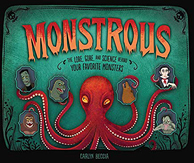Killer Bees
Killer bees, otherwise known as Africanized Honey Bees are tiny little mercenaries with no forgiveness. They are deadly not because of their poison but because they swarm in such exceptionally large numbers that they can carpet your body in seconds. To survive do the following:
1. Run. Do not swat at the bees. Bees are attracted to movement. As you run, pull your shirt over your face.
2. Seek shelter. Don’t bother going underwater. Bees have nothing better to do but wait for you to emerge and then start stinging you again.
3. Take out the stingers with the flat edge of a credit card to prevent the spread of venom. Be careful not to push the stingers in further.
Killer bees, otherwise known as Africanized Honey Bees are tiny little mercenaries with no forgiveness. They are deadly not because of their poison but because they swarm in such exceptionally large numbers that they can carpet your body in seconds. To survive do the following:
1. Run. Do not swat at the bees. Bees are attracted to movement. As you run, pull your shirt over your face.
2. Seek shelter. Don’t bother going underwater. Bees have nothing better to do but wait for you to emerge and then start stinging you again.
3. Take out the stingers with the flat edge of a credit card to prevent the spread of venom. Be careful not to push the stingers in further.
In MONSTROUS I advised to never EVER mess with a baby bigfoot or “littlefoot” because there is always going to be a mother bigfoot not far behind. The same is true for mother grizzly bears. If you happen to find yourself being mauled by an angry grizzly, you should:
 |
| We kill with cuteness. |
1. Take an existentialist moment to ponder why you don’t have the self-restraint not to pet baby animals in the wild.
2.
This survival technique is called "death feigning" or thanatosis
and is used by several animals to avoid predators. One example of thanatosis is female
dragonflies who will often drop out of the sky and fall to the ground in an Oscar-worthy death scene. This melodramatic hi-jinx is to avoid aggressive males
when they are um…not feeling the romantic urge. This faking
death trick works on male dragonflies 60% of the time.(1) And
like I always say….what works with dragonfly copulation has to work when
surviving imaginary beasts.(2)
 |
| This is what a dragonfly looks like when not in the mood. |
Black Bear
Do NOT play dead. Black bears won’t fall for that nonsense.
Instead, fight hard. Like way harder than Brad Pitt did in the Legends of the Fall and a tiny bit harder than Leonardo DiCaprio did in The Revenant. (I
personally thought he should have won that one.)
Better yet, try to avoid the darn bear in the first place.
Here is a helpful graphic from the book:
 |
| A page from MONSTROUS: The Lore, Gore, and Science behind your Favorite Monsters. What works on Bigfoot will also work on some bears. |
Monkeys
Readers of this blog know how much I mistrust monkeys. And
unfortunately, angry macaque attacks are not the stuff of fiction. Experts say most
monkey attacks occur when the monkey thinks you are keeping food from them.
This is why you should never spill pasta sauce on your shirt and then hang out
with hungry macaques. Signals can get crossed.
 |
| If I show my teeth, I am either yawning or about to rip your face off... |
But if you do find yourself being bullied by a pack of
monkeys. First, remain calm. You must be smarter than the monkey. Like I advise
in the King Kong chapter of MONSTROUS, do not look an angry primate in the eye.
This is seen as an act of aggression and will enrage them further. Instead,
hold out your hands to show you are not hiding delicious snacks. If you are
withholding delicious snacks….give em’ up. Your lunch is not worth contracting
Herpes B.
 |
| A page from the Kraken chapter of MONSTROUS. Communicating correctly with a Giant Octopus is vital for survival. |
First off, if you ever find yourself facing a hungry Great
White….I am really sorry. That's a rough day at the beach. Sure. Sure. Sure. All the
shark experts say shark attacks are rare. Blah. blah. blah. Shark attacks are
rare because most species of sharks have no desire to eat humans. Shark
attacks are usually caused by mistaken identity – they think you are a yummy seal or
some other more appetizing snack.
Still, unprovoked shark attacks are on the rise and this is because most sharks think we are jerks. (3) Sharks don't like us because they cause less than 4 fatalities per year while humans kill 100 million sharks per year. (4) Seems like an opportune time to even the score to me.
So, If you do find yourself in shark-infested waters here is how to survive.
So, If you do find yourself in shark-infested waters here is how to survive.
1. You must remain calm. That old adage about
sharks attracted to a single drop of blood is true. But what is also true is
that many species of sharks are attracted to fear. They cannot smell it like
blood but they are sensitive to electrical fields and will hear your fluttering
heartbeat like a dinner bell. So ya, slow your heartbeat. Again, good luck
with that.
2. Follow the shark etiquette. Do not turn your
back on the shark and do not make any sudden movements. You do have some time. Most sharks do not just go up to humans and clamp their jaw down. That’s
just rude. First, they will bump into you to determine if you are edible.
3. Punch the shark. But not in the nose. Because that will put your fist dangerously close to its teeth. If the shark does find you
worthy of a tasting, shark experts advise you punch the shark in the gills or eyes. Again, good luck with that.
4. Get out of the water. Well, duh.
I will leave you with this reassuring imagery….
 |
| Sharks are watching....and waiting |
Legal Disclaimer:
Neither MONSTROUS or this blog is meant to be medical advice or really any sound advice on any subject matter. If you find you have been attacked by a werewolf or other monster, you should seek out a medical professional and not an author. (At least before the full moon...)
Neither MONSTROUS or this blog is meant to be medical advice or really any sound advice on any subject matter. If you find you have been attacked by a werewolf or other monster, you should seek out a medical professional and not an author. (At least before the full moon...)
[1] Results are mixed in humans.
[2] Actually, I rarely get to say that. Mostly because there is not a huge market for dragonfly copulation in children's books.
[3] I completely made that up. No one has interviewed a shark to date and experts really don’t know why shark attacks are on the rise. Some explanations include; greater human populations along coastlines, the destruction of habitat, changing water quality, climate change and shifts in prey distribution or……sharks think we are jerks.
[4] McKeever, William. Emperors of the Deep. NY: New York, HarperOne, 2019, 5.
[5] I limited my food references in this post. It took a lot of restraint.
[3] I completely made that up. No one has interviewed a shark to date and experts really don’t know why shark attacks are on the rise. Some explanations include; greater human populations along coastlines, the destruction of habitat, changing water quality, climate change and shifts in prey distribution or……sharks think we are jerks.
[4] McKeever, William. Emperors of the Deep. NY: New York, HarperOne, 2019, 5.
[5] I limited my food references in this post. It took a lot of restraint.
















No comments:
Post a Comment